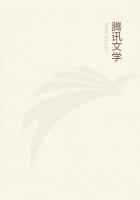The great gateway to the lower ward was built in the commencement of the reign of Henry the Eighth; it is decorated with his arms and devices--the rose, portcullis, and fleur-de-lis, and with the bearings of Catherine of Arragon.In 1522 Charles the Fifth visited Windsor, and was installed I knight of the Garter.
During a period of dissension in the council, Edward the Sixth was removed for safety to Windsor by the Lord Protector Somerset, and here, at a later period, the youthful monarch received a letter from the council urging the dismissal of Somerset, with which, by the advice of the Arch-bishop of Canterbury, he complied.
In this reign an undertaking to convey water to the castle from Blackmore Park, near Wingfield, a distance of five miles, was commenced, though it was not till 1555, in the time of Mary, that the plan was accomplished, when a pipe was brought into the upper ward, "and there the water plenteously did rise thirteen feet high." In the middle of the court was erected a magnificent fountain, consisting of a canopy raised upon columns, gorgeously decorated with heraldic ornaments, and surmounted by a great vane, with the arms of Philip and Mary impaled upon it, and supported by a lion and an eagle, gilt and painted.The water was discharged by a great dragon, one of the supporters of the Tudor arms, into the cistern beneath, whence it was conveyed by pipes to every part of the castle.
Mary held her court at Windsor soon after her union with Philip of Spain.
About this period the old habitations of the alms-knights on the south side of the lower quadrangle were taken down, and others erected in their stead.
Fewer additions were made to Windsor Castle by Elizabeth than might have been expected from her predilection for it as a place of residence.
She extended and widened the north terrace, where, when lodging within the castle, she daily took exercise, whatever might be the weather.The terrace at this time, as it is described by Paul Hentzner, and as it appears in Norden's view, was a sort of balcony projecting beyond the scarp of the hill, and supported by great cantilevers of wood.
In 1576 the gallery still bearing her name, and lying between Henry the Seventh's buildings and the Norman Tower, was erected by Elizabeth.
This portion of the castle had the good fortune to escape the alterations and modifications made in almost every other part of the upper ward after the restoration of Charles the Second.It now forms the library.A large garden was laid out by the same queen, and a small gateway on Castle Hill built by her--which afterwards became one of the greatest obstructions to the approach, and it was taken down by George the Fourth.
Elizabeth often hunted in the parks, and exhibited her skill in archery, which was by no means inconsiderable, at the butts.Her fondness for dramatic performances likewise induced her to erect a stage within the castle, on which plays and interludes were performed.And to her admiration of the character of Falstaff, and her love of the locality, the world is indebted for the "Merry Wives of Windsor."James the First favoured Windsor as much as his predecessors;caroused within its halls, and chased the deer in its parks; Christian the Fourth of Denmark was sumptuously entertained by him at Windsor.In this reign a curious dispute occurred between the king and the dean and chapter respecting the repair of a breach in the wall, which was not brought to issue for three years, when, after much argument, it was decided in favour of the clergy.
Little was done at Windsor by Charles the First until the tenth year of his reign, when a banqueting-house erected by Elizabeth was taken down, and the magnificent fountain constructed by Queen Mary demolished.Two years after wards "a pyramid or lantern," with a clock, hell, and dial, was ordered to be set up in front of the castle, and a balcony was erected before the room where Henry the Sixth was born.
In the early part of the year 1642 Charles retired to Windsor to shield himself from the insults of the populace, and was followed by a committee of the House of Commons, who prevailed upon him to desist from the prosecution of the impeached members.On the 23rd of October in the same year, Captain Fogg, at the head of a Parliamentarian force, demanded the keys of the college treasury, and, not being able to obtain them, forced open the doors, and carried off the whole of the plate.
The plunder of the college was completed by Vane, the Parliamentary governor of the castle, who seized upon the whole of the furniture and decorations of the choir, rifled the tomb of Edward the Fourth, stripped off all the costly ornaments from Wolsey's tomb, defaced the emblazonings over Henry the Sixth's grave, broke the rich painted glass of the windows, and wantonly destroyed the exquisite woodwork of the choir.
Towards the close of the year 1648 the ill-fated Charles was brought a prisoner to Windsor, where he remained while preparations were made for the execrable tragedy soon afterwards enacted.After the slaughter of the martyr-monarch the castle became the prison of the Earl of Norwich, Lord Capel, and the Duke of Hamilton, and other royalists and cavaliers.
Cromwell frequently resided within the castle, and often took a moody and distrustful walk upon the terrace.It was during the Protectorate, in 1677, that the ugly buildings appropriated to the naval knights, and standing between the Garter Tower and Chancellor's Tower, were erected by Sir Francis Crane.
Containing the History of the Castle from the Reign of Charles the Second to that of George the Third--With a few Particulars concerning the Parks and the Forest.Windsor Castle IVContaining the History of the Castle from the Reign of Charles the Second to that of George the Third--With a few Particulars concerning the Parks and the Forest.












